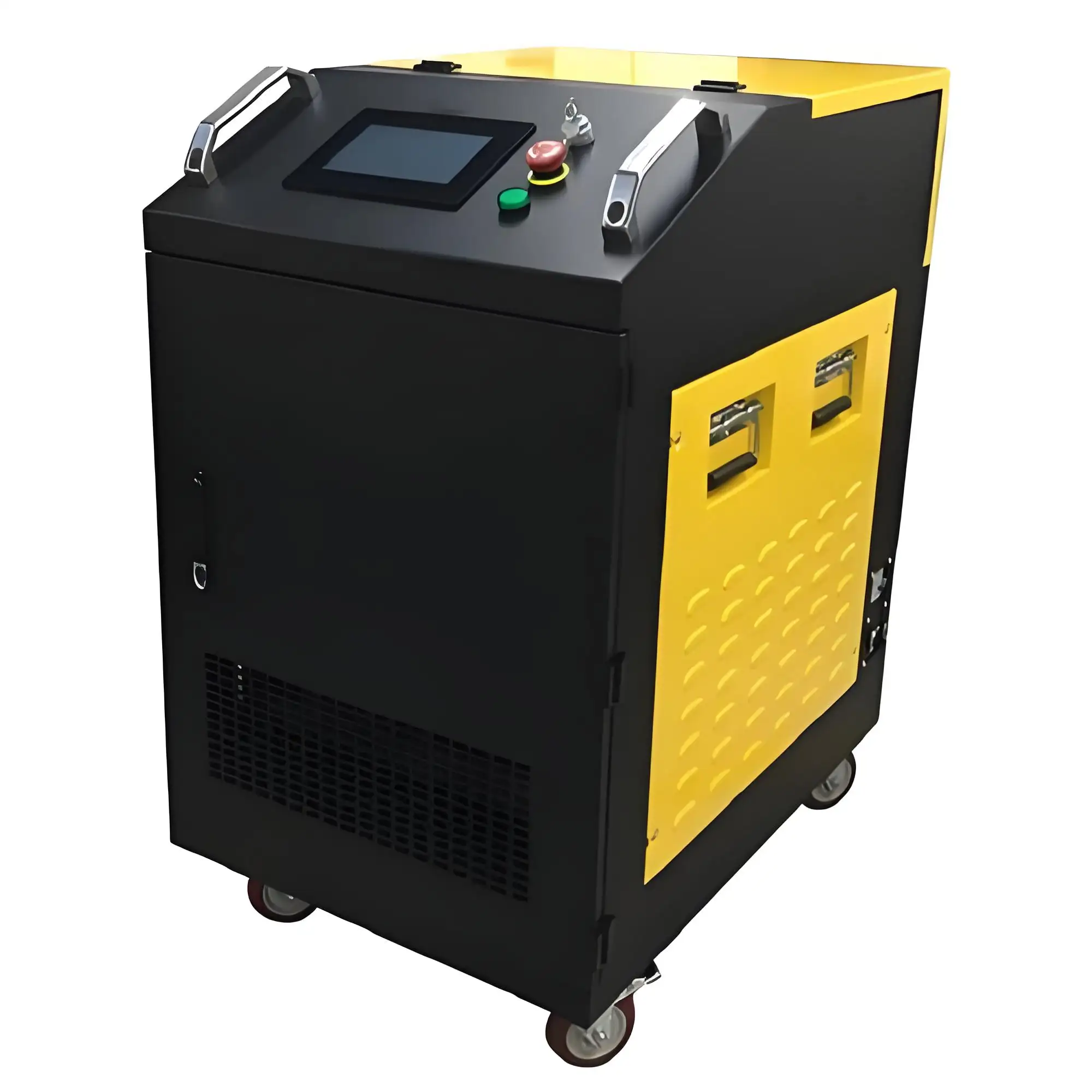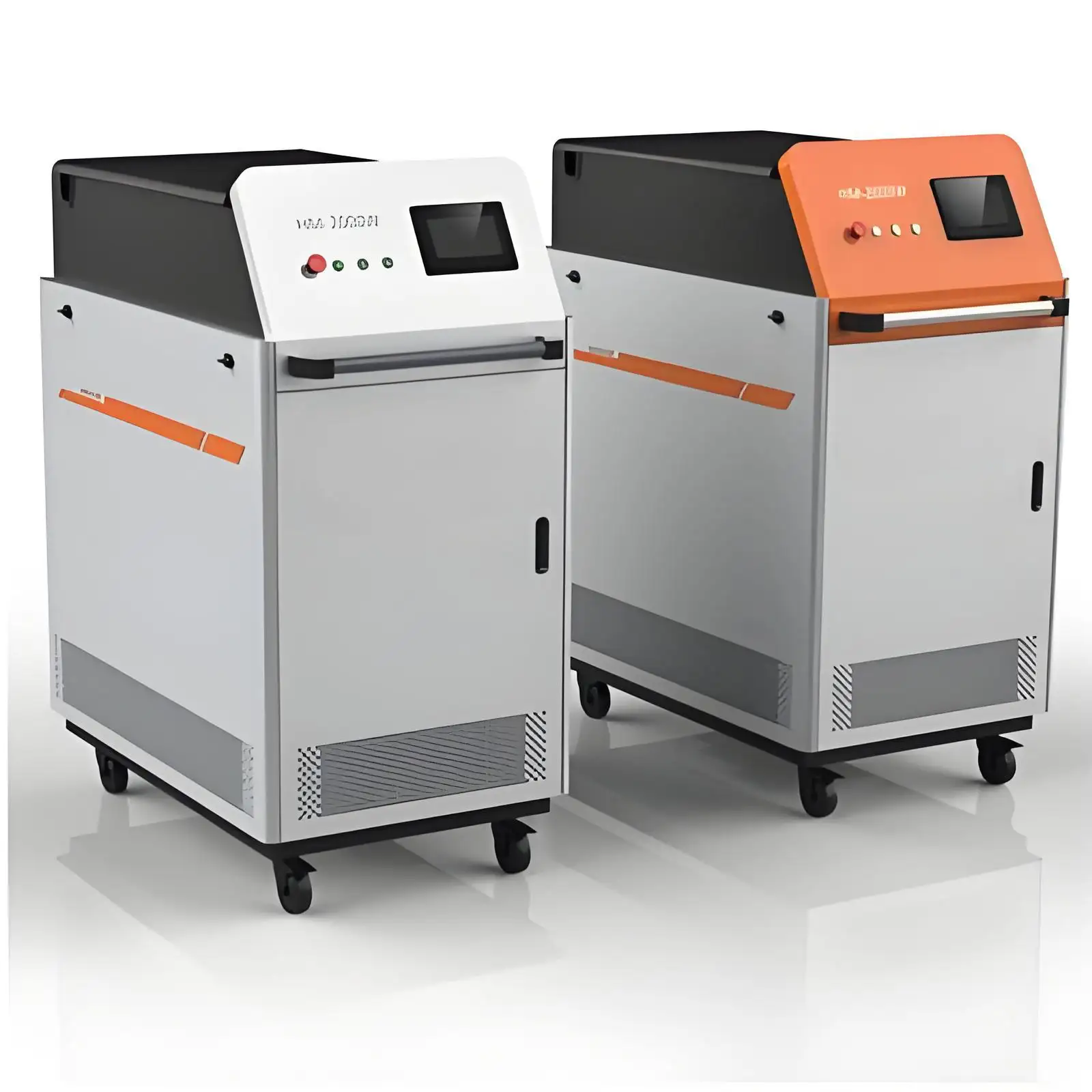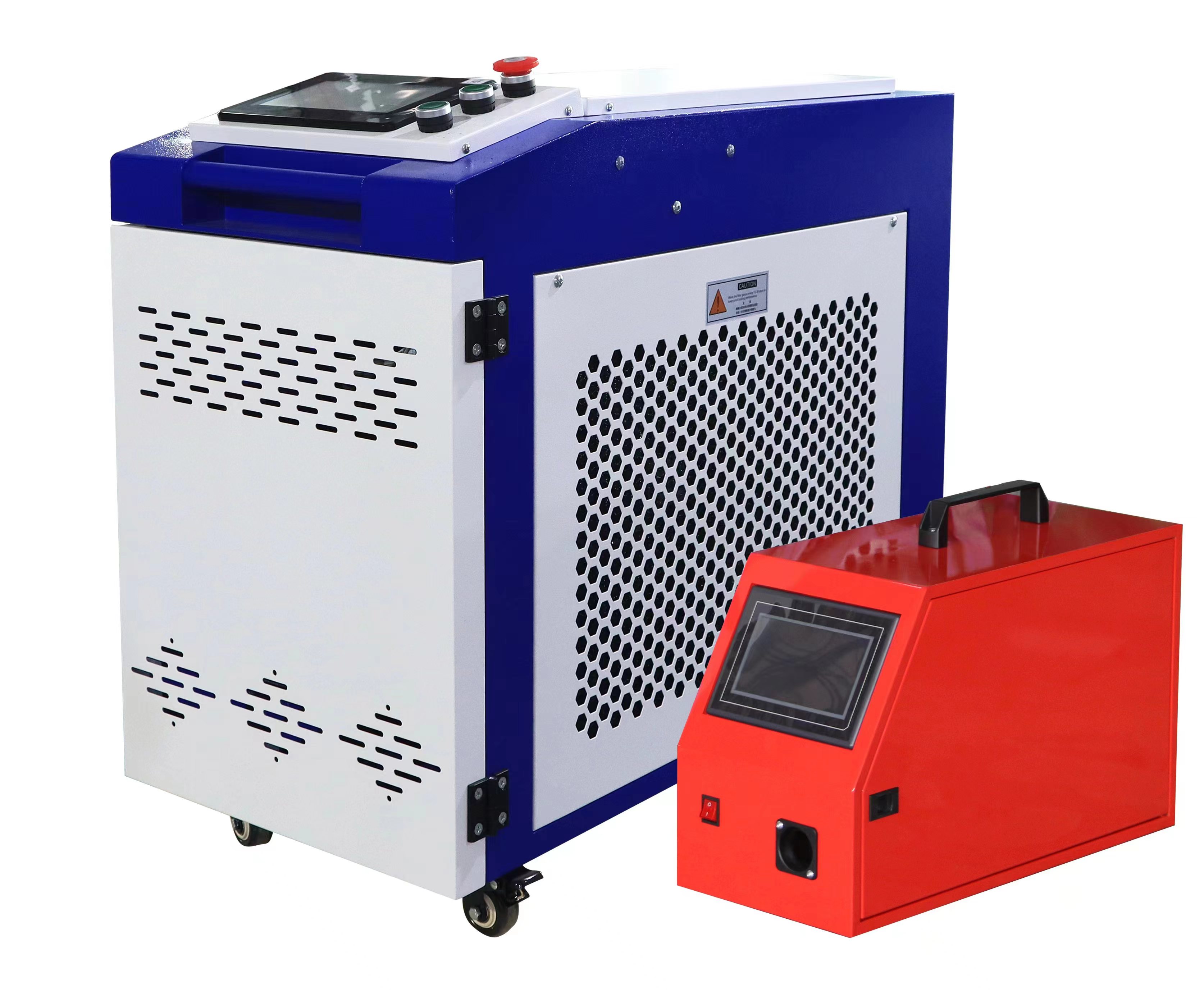In the realm of surface cleaning and preparation, laser rust removal has emerged as a revolutionary technology. Its precision, efficiency, and environmental friendliness have made it a popular choice across various industries, from automotive and aerospace to shipbuilding and historical preservation. But a question that often arises is whether laser rust removal can achieve multi-material cleaning. As someone who has been deeply involved in this industry for years, working with different materials and seeing the capabilities of laser technology firsthand, I’m here to share my insights and experiences.
Understanding Laser Rust Removal
Before diving into the topic of multi-material cleaning, let’s first understand how laser rust removal works. At its core, laser rust removal utilizes a high-energy laser beam to interact with the rust or contaminants on a surface. The laser energy is absorbed by the rust, causing it to heat up rapidly and either vaporize or sublimate. This process effectively removes the unwanted layer without damaging the underlying substrate, making it a non-abrasive and highly selective cleaning method.
The key to the success of laser rust removal lies in its ability to precisely control the laser parameters, such as power, pulse duration, and wavelength. By adjusting these parameters, operators can tailor the cleaning process to suit different materials and cleaning requirements. This flexibility is what makes laser rust removal a promising candidate for multi-material cleaning.

The Potential for Multi-Material Cleaning
1. Material Compatibility
One of the primary considerations when it comes to multi-material cleaning is material compatibility. Laser rust removal has shown remarkable versatility in cleaning a wide range of materials, including metals like steel, aluminum, copper, and brass, as well as non-metals such as ceramics, composites, and even some plastics. However, it’s important to note that not all materials respond to laser cleaning in the same way.
For example, metals with high thermal conductivity, like aluminum, may require higher laser power or shorter pulse durations to achieve effective cleaning without causing thermal damage. On the other hand, more delicate materials, such as certain plastics or historical artifacts, may require lower power settings and more precise control to avoid melting or discoloration.
2. Surface Conditions
The surface condition of the material also plays a crucial role in determining the effectiveness of laser rust removal. Different materials may have varying levels of rust, paint, or other contaminants, which can affect the absorption of laser energy and the cleaning process. Additionally, the surface roughness, texture, and previous treatments can all influence the outcome.
For instance, a rough surface may require more laser energy to penetrate and remove the contaminants effectively, while a smooth surface may be easier to clean with lower power settings. Understanding the surface conditions of the materials to be cleaned is essential for optimizing the laser parameters and achieving the desired results.
3. Laser Parameters Optimization
As mentioned earlier, optimizing the laser parameters is key to achieving successful multi-material cleaning. By adjusting the power, pulse duration, wavelength, and scanning speed, operators can fine-tune the cleaning process to suit different materials. This requires a deep understanding of the interaction between the laser and the material, as well as experience in working with various types of surfaces.
For example, when cleaning a multi-material assembly, such as a car engine with a combination of steel, aluminum, and rubber components, the operator may need to use different laser settings for each material. This can be achieved by programming the laser system to automatically adjust the parameters based on the material being cleaned, or by manually switching between settings as needed.

Real-World Applications of Multi-Material Laser Cleaning
1. Automotive Industry
In the automotive industry, laser rust removal has found numerous applications in multi-material cleaning. For instance, during the manufacturing process, laser cleaning can be used to remove rust, paint, and other contaminants from various car parts, including engine blocks, cylinder heads, and chassis components. These parts are often made of different materials, such as steel, aluminum, and cast iron, and require precise cleaning to ensure proper adhesion of coatings or adhesives.
Additionally, in the aftermarket and repair sector, laser cleaning can be used to restore old or damaged car parts. For example, a vintage car enthusiast may want to remove rust and paint from a classic car body made of steel, while preserving the original chrome trim, which is typically made of a different alloy. Laser cleaning can achieve this with high precision, leaving the chrome untouched while effectively cleaning the steel surface.
2. Aerospace Industry
The aerospace industry is another sector where multi-material laser cleaning is highly valued. Aircraft components are often made of a variety of materials, including titanium, aluminum, composites, and special alloys. These components require strict cleaning standards to ensure their performance and safety.
Laser rust removal can be used to clean aircraft engine parts, such as turbine blades and compressor disks, which are exposed to high temperatures and harsh environments. The laser can remove carbon deposits, rust, and other contaminants without causing thermal damage to the delicate components. Additionally, laser cleaning can be used to prepare surfaces for bonding or coating, improving the adhesion and durability of the applied materials.
3. Shipbuilding and Marine Industry
In the shipbuilding and marine industry, multi-material laser cleaning is used to maintain and repair ships and offshore structures. Ships are often made of a combination of steel, aluminum, and composite materials, and are exposed to saltwater, which can cause severe corrosion.
Laser rust removal can be used to clean ship hulls, decks, and other components, removing rust, paint, and marine growth without damaging the underlying substrate. This not only improves the appearance of the ship but also extends its service life by preventing further corrosion. Additionally, laser cleaning can be used to prepare surfaces for welding or coating, ensuring strong and durable joints.
4. Historical Preservation
Historical preservation is another area where multi-material laser cleaning has shown great potential. Many historical artifacts, such as statues, monuments, and architectural elements, are made of a variety of materials, including stone, metal, and wood. These artifacts often require gentle cleaning to remove dirt, grime, and pollutants without damaging the original surface.
Laser rust removal can be used to clean metal statues and monuments, removing rust and corrosion while preserving the intricate details and patina. For stone artifacts, laser cleaning can remove black crusts, biological growth, and other contaminants without causing thermal shock or mechanical damage. This non-invasive cleaning method helps to preserve the historical and cultural value of these artifacts for future generations.

Challenges and Considerations
While laser rust removal has shown great promise in multi-material cleaning, there are also some challenges and considerations to keep in mind:
1. Cost and Investment
Laser rust removal equipment can be a significant investment, especially for small businesses or individual users. The cost of the laser system, along with the associated accessories and maintenance, can be a barrier to entry. However, it’s important to consider the long-term benefits and cost savings that laser cleaning can provide, such as reduced labor costs, improved efficiency, and extended service life of cleaned components.
2. Operator Training and Expertise
Operating a laser rust removal system requires specialized training and expertise. Operators need to understand the principles of laser technology, material properties, and cleaning parameters to achieve optimal results. Additionally, they need to be familiar with safety protocols and regulations to ensure the safe operation of the equipment. Investing in operator training and ongoing education is essential for maximizing the effectiveness and safety of multi-material laser cleaning.
3. Material-Specific Challenges
As mentioned earlier, different materials may present unique challenges when it comes to laser cleaning. For example, some materials may be more prone to thermal damage, while others may have low laser absorption, making it difficult to achieve effective cleaning. Additionally, materials with complex geometries or hard-to-reach areas may require specialized fixtures or techniques to ensure thorough cleaning. Understanding these material-specific challenges and developing appropriate solutions is crucial for successful multi-material laser cleaning.
4. Environmental and Safety Considerations
While laser rust removal is generally considered an environmentally friendly cleaning method, there are still some environmental and safety considerations to keep in mind. For example, the laser cleaning process may generate dust, fumes, or other byproducts that need to be properly contained and disposed of. Additionally, operators need to wear appropriate personal protective equipment (PPE), such as safety glasses and gloves, to protect themselves from laser radiation and other hazards.
Table: Comparison of Laser Cleaning Parameters for Different Materials
| Material | Recommended Laser Power (W) | Pulse Duration (ns) | Scanning Speed (mm/s) |
|---|---|---|---|
| Steel | 100 – 500 | 10 – 100 | 500 – 2000 |
| Aluminum | 50 – 300 | 5 – 50 | 1000 – 3000 |
| Copper | 80 – 400 | 15 – 120 | 600 – 2500 |
| Titanium | 70 – 350 | 12 – 80 | 800 – 2800 |
| Ceramics | 30 – 200 | 20 – 150 | 400 – 1800 |
| Composites | 40 – 250 | 25 – 180 | 300 – 1500 |
Note: These parameters are general guidelines and may vary depending on the specific material, surface condition, and cleaning requirements. It’s always best to conduct test cleaning on a small area before proceeding with full-scale cleaning.
Conclusion
In conclusion, laser rust removal has the potential to achieve multi-material cleaning, offering a versatile and efficient solution for a wide range of industries and applications. By understanding the principles of laser technology, material properties, and cleaning parameters, operators can tailor the cleaning process to suit different materials and achieve optimal results.
However, it’s important to be aware of the challenges and considerations associated with multi-material laser cleaning, such as cost, operator training, material-specific challenges, and environmental and safety considerations. By addressing these issues and investing in the right equipment, training, and expertise, businesses and individuals can unlock the full potential of laser rust removal for multi-material cleaning.
As technology continues to advance, we can expect to see even more innovative applications of laser cleaning in the future. Whether it’s cleaning complex multi-material assemblies in the automotive industry, preserving historical artifacts, or maintaining critical components in the aerospace sector, laser rust removal is poised to play a significant role in shaping the future of surface cleaning and preparation.

Related Questions
Q1: Can laser rust removal damage the underlying material?
A1: Laser rust removal is designed to be a non-abrasive and highly selective cleaning method. When properly optimized, it can remove rust and contaminants without damaging the underlying substrate. However, if the laser parameters are not set correctly, there is a risk of thermal damage, such as melting, discoloration, or changes in material properties. It’s crucial to conduct test cleaning on a small area and adjust the parameters accordingly to ensure safe and effective cleaning.
Q2: Is laser rust removal suitable for all types of rust?
A2: Laser rust removal can effectively remove various types of rust, including surface rust, flaky rust, and even some forms of pitting rust. However, the effectiveness may vary depending on the severity and depth of the rust. For heavily rusted or pitted surfaces, multiple passes or higher laser power may be required to achieve thorough cleaning. In some cases, pre-treatment or mechanical removal of loose rust may be necessary before laser cleaning.
Q3: Can laser rust removal be used for large-scale industrial applications?
A3: Yes, laser rust removal can be scaled up for large-scale industrial applications. There are various types of laser systems available, ranging from handheld devices for small-scale cleaning to automated systems for high-volume production. Automated laser cleaning systems can be integrated into production lines, offering high efficiency, consistency, and repeatability. Additionally, robotic arms can be used to manipulate the laser beam, allowing for precise cleaning of large and complex components.
Q4: How does laser rust removal compare to traditional cleaning methods?
A4: Laser rust removal offers several advantages over traditional cleaning methods, such as sandblasting, chemical cleaning, or mechanical grinding. It is a non-abrasive method that does not generate dust, debris, or waste materials, making it more environmentally friendly. Additionally, laser cleaning is highly selective, allowing for precise removal of rust and contaminants without damaging the underlying substrate. It also offers faster cleaning speeds, reduced labor costs, and improved safety, as there is no need for hazardous chemicals or high-pressure equipment.
Q5: What are the future trends in laser rust removal for multi-material cleaning?
A5: The future of laser rust removal for multi-material cleaning looks promising. Advances in laser technology, such as the development of higher-power lasers, shorter pulse durations, and new wavelengths, are expanding the capabilities of laser cleaning. Additionally, the integration of artificial intelligence and machine learning algorithms is enabling more intelligent and automated cleaning processes, optimizing laser parameters in real-time based on material properties and cleaning requirements. Furthermore, there is a growing trend towards portable and handheld laser cleaning devices, making it easier to access and clean hard-to-reach areas or on-site applications.






